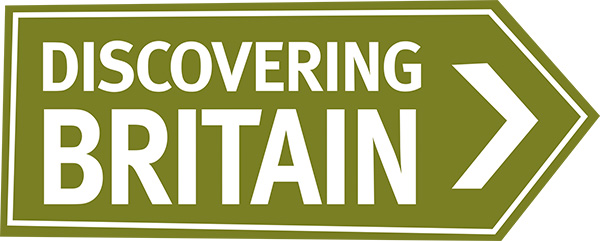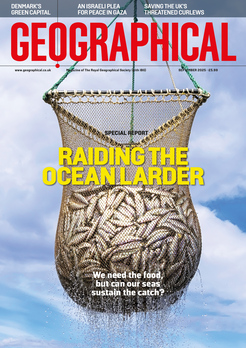
Rory Walsh feels the power of the sea at two spots on the north Cornish coast
Discovering Britain
Views • Coastal • South West England • Web Guide
Summer sees Britain transformed by mass migrations. When 200,000 music lovers went to the 2023 Glastonbury Festival in June, the Somerset fields of Worthy Farm became a temporary city, home to more people than Aberdeen or Newcastle. In August, the Edinburgh Festival and Fringe will see the Scottish capital’s 465,000 residents joined by an estimated four million visitors. Each year, up to five million holidaymakers head to Cornwall. In the summer months, Newquay’s population can quadruple, from 25,000 to near 100,000.
Numbers peak in August, when Newquay hosts the annual Boardmasters Festival. The official website describes it as ‘five epic days of music, surf and beach lifestyle, all set to the stunning backdrop of the Cornish coast’. Crowds of around 50,000 enjoy concerts at Watergate Bay and a surfing competition, the Boardmasters Open, at Fistral Beach. Fistral hosts many other national and international surfing events, from championships to club meetings. A large sign in the car park welcomes you to the Home of British Surfing.
‘A lot of people think you can’t surf in the UK,’ says Ben Fellows, manager of Fistral Beach Surf School. ‘People I meet abroad, in places like France, let alone Australia or America, are really surprised.’ Fellows moved to Newquay from his native Northampton and began surf instructing at Fistral eight years ago. Besides surf lessons, the school provides boards and equipment to hire. ‘We get regulars from Plymouth, Exeter, even from London. They fly in to Newquay airport and stay overnight in one of the surf hostels. Fistral is the famous break – the one that everyone wants to ride.’
On a bright June morning, surfers carry their boards to the shoreline. Sunbathers doze and dogs scamper. Couples watch from café and bar tables. Looking out to sea, the beach’s golden expanse stretches for around 700 metres between two grassy headlands. To the left (southwest) is Pentire; to the right (northeast) is Towan Head. On the horizon, blue water meets blue sky without an obstacle in sight. These natural features combine to create a surfer’s paradise. A quick glance at a map shows why.
Fistral beach faces west, directly towards the North Atlantic. The next landmass in that direction is the USA. As a result, Fistral is perfectly placed to receive large ‘Atlantic rollers’, ocean waves that build up for hundreds of kilometres. Fistral’s name originates from ‘bystal’, Cornish for ‘foul water’. Rather than water quality, this refers to the number of waves that land on the beach, making it difficult or ‘foul’ for berthing ships. These consistent waves are ideal for surfing, however.
As well as facing in the ideal direction, Fistral is an ideal shape. Fellows explains, ‘You have three main factors for good surfing: wind direction, the size of the waves and the “periods” or gaps between them. The ideal conditions at Fistral are an easterly wind, good size waves and a period of nine to ten seconds. Fistral is a nice, open beach, which means you catch lots of swell. It’s not too open, though. At really wide beaches, the wind flattens waves out. At Fistral, the two headlands at either end compress the waves and protect them from the wind. And then there’s the Cribbar…’
While the cliffs of Pentire and Towan Head are obvious landmarks, the other coastal feature that shapes waves at Fistral is hidden underwater. The Cribbar is a reef about 100 metres off Towan Head. When swells come in, the Cribbar lifts them up like a ramp. ‘Large swells can be tracked in advance, up to two weeks before they break at the beach. When they are set to arrive, anyone with a board jumps down here,’ says Fellows. ‘The car park fills up and people queue on the beach to watch. You can have a coffee and see some amazing surfing’.

During the summer, Fistral can get very busy, with dozens of boards bobbing in the water. Yet summer isn’t always the best time to surf. ‘In the summer, the waves are typically between two and four feet high,’ says Fellows. ‘You get bigger swells in winter, though, which makes waves of eight to ten feet. When the Cribbar is working, that’s when you get waves up to 30 feet.’ Writing as a landlubber who only surfs the internet, this is an unexpected discovery. Fellows points out, ‘You can go surfing anytime. The beach is always open.’
Fistral is one of various beaches that line the natural harbour of Newquay Bay. Newquay’s origins can be traced to an Iron Age hillfort on Trevelgue Head, the peninsula beside Porth beach. There is local evidence of a Bronze Age settlement and a medieval fishing village. The name ‘New Quay’ was first recorded in the 17h century, however, and the expanding town became a resort when passenger railway services began in the 1870s. These days, most visitors arrive by road.
Of course, roads didn’t always mean motor vehicles. Early Victorian holidaymakers arrived at Newquay in horse-drawn carriages. At Carnewas, 14.5 kilometres east along the coast, an enterprising farmer provided stalls for their horses for a small fee. While the horses rested before the ride into Newquay, their owners enjoyed the clifftop views and, depending upon the tide, explored the beach below. Carnewas became a popular rest stop. Today, it remains one of the most spectacular points on the Cornish coast.
Discover more about Britain…
Paths from the National Trust car park still provide views of the Bedruthan Steps, a series of massive slate outcrops that line the sand. Their name originally referred to a path cut into the cliff. Over time, it has transferred to include the stacks as well. A legend grew that Bedruthan was a Cornish giant who used them as stepping stones. Centuries of erosion has worn the steps into gnarled shapes. One become known as Queen Bess Rock for a resemblance to Elizabeth I. Since the Victorian era, however, Queen Bess has lost her ‘head’.
At high tide, only the tips of the Bedruthan Steps appear above crashing waves. At low tide, they sit on the beach like a family of holidaying mountains. When I last visited, the tide was out and groups of people, tiny as ants, explored the rocks. Soon afterwards, access ended. A severe rock fall in December 2019 damaged the cliffs and the beach has been closed off ever since to ensure public safety. Even before then, the cliff path was shut each winter and was regularly closed during bad weather.
Cornwall’s north coast is a dramatic landscape where sea, sand and cliffs clash and blaze. Sprinkled along the shorelines, former fishing and mining villages have become tourist hotspots. While Padstow, St Ives and Tintagel thrive by forging links with fine food, modern art and the legends of King Arthur, Newquay makes hay from making waves. Pre pandemic, surfing’s estimated worth to the Cornish economy was £150 million. Fistral’s fame and fortune are thanks to geography. So is Carnewas’s fate. Less than 16 kilometres apart, one is always open, the other now permanently shut. The sea gives but it also takes.





